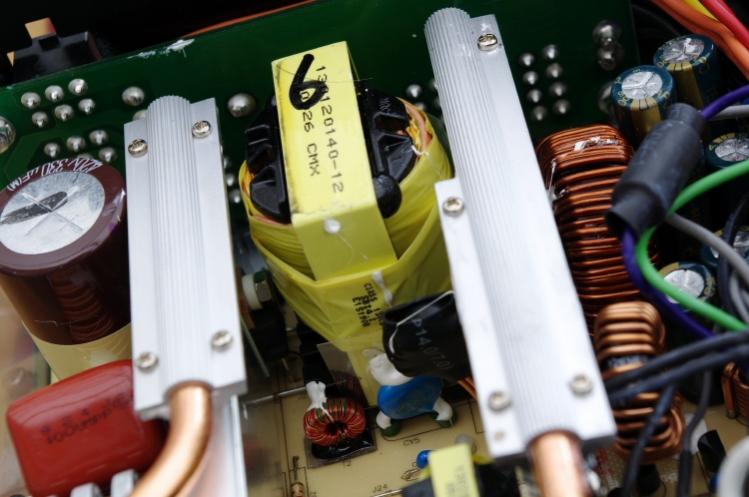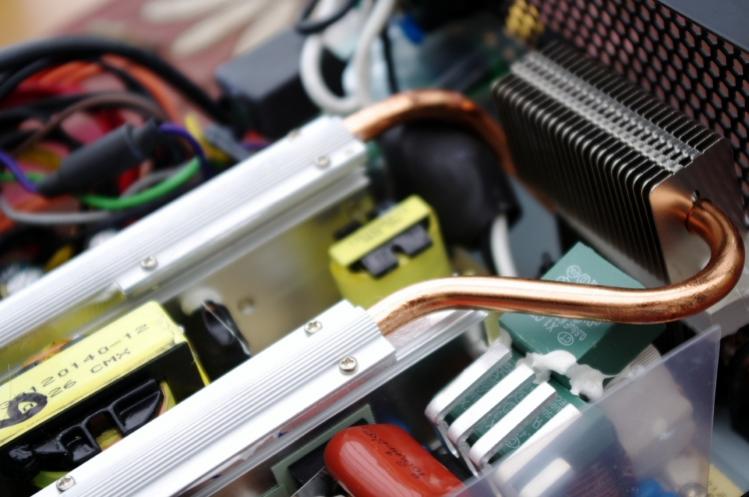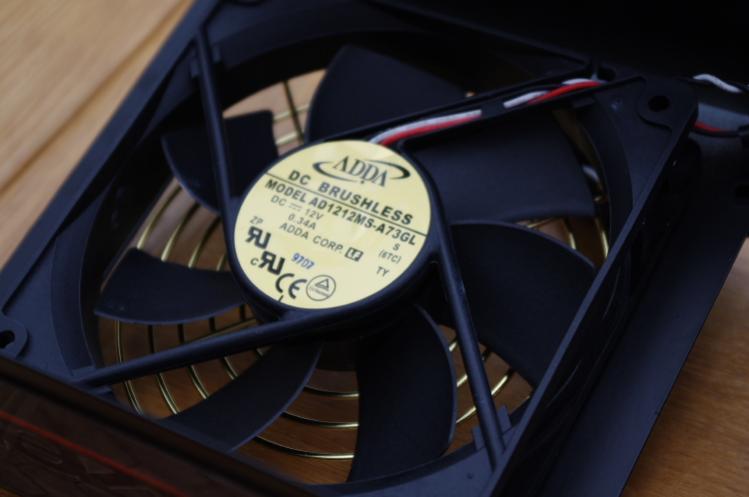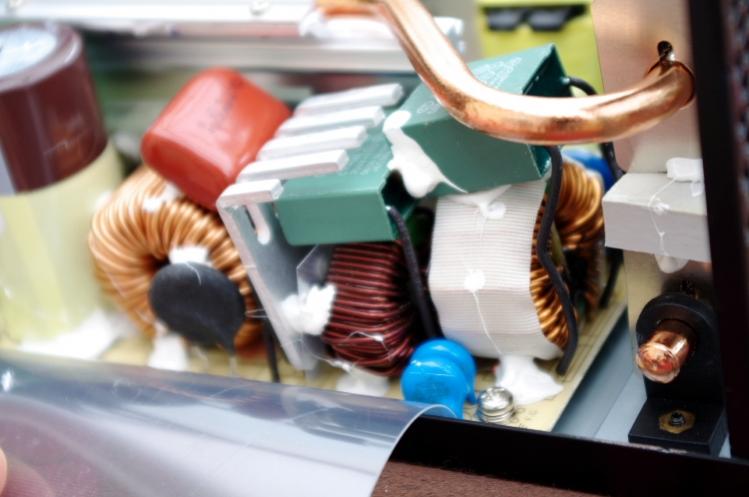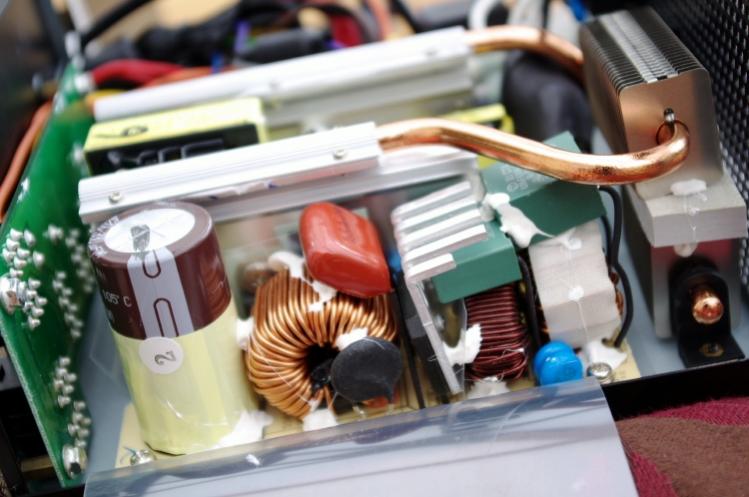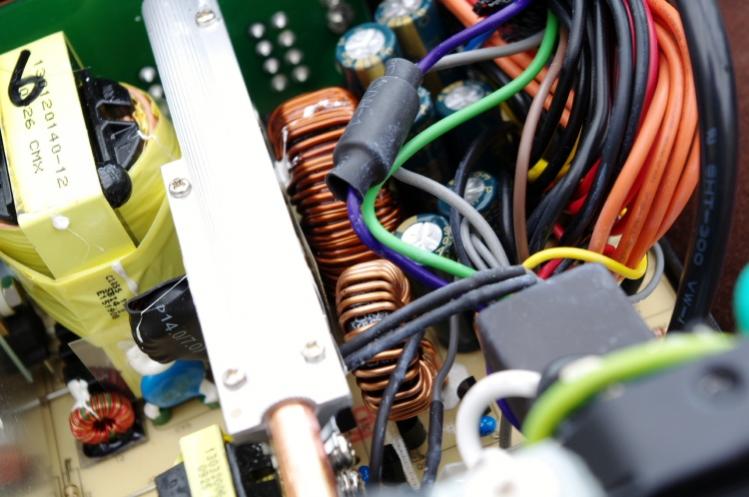Nesteq ASM Xzero 600W Power Supply Review
Jake Sedge / 14 years ago
An Even Closer Look
This is where we take a quick peek into the internals of the PSU which is one of the best ways to judge the quality of the PSU. We would not recommend doing this yourself as it will not only void your warranty, but the capacitors inside a PSU can hold a dangerous charge for a long time- we open it up so you don’t have to!
Upon opening the PSU, the first thing to greet us is a chunky heatpipe cooling solution. These heatsinks are really well designed to move air away from the MOSFETS etc. and straight towards the vented back panel. This means that any air entering the case will be going straight through these heatsinks so it makes great use of however much air it gets, meaning that even if a fan is used, it will only have to spin at a very low RPM. This cooling solution is very effective and a lot better than what I have seen on other fully passive PSUs.
We can also see that the fan is a 120mm brushless model from Adda, known for making good quality fans that will last a long time. This model is actually pretty quiet and when I turned the fan on and manually set it to the minimum, it was almost silent and moved quite a lot of air out the back.
The AC transient filtering is good quality, the transient filter smooths out the input from the wall socket and is a vital part of making the PSU stable. To do this, a system of capacitors, ferrite coils and a metal oxide varistor. As expected from high quality PSUs, this goes above and beyond the call of duty delivering 3 capacitors and 2 ferrite coils on the first stage and a further 4 capacitors and 3 coils on the second stage. It is impossible to tell exactly what each capacitor and ferrite coil are for, but judging by the layout we suspect that the figures given are correct. This ensures that clean power is getting to your system.
We can also see the main capacitor which is made by Nippon-Chemicon who make caps for many high quality power supplies. This particular cap is rated at 105 degrees so you won’t have to worry about it leaking or exploding any time soon!
The other, less important, capacitors are made by Teapo who also make top quality capacitors and are also rated at 105 degrees. It is important that manufacturers do not scrimp in these areas otherwise your power supply will become a time bomb.
The build quality inside was generally good, and it was nice to see thermal paste and liberal use of insulation being used to ensure reliability and longevity.
